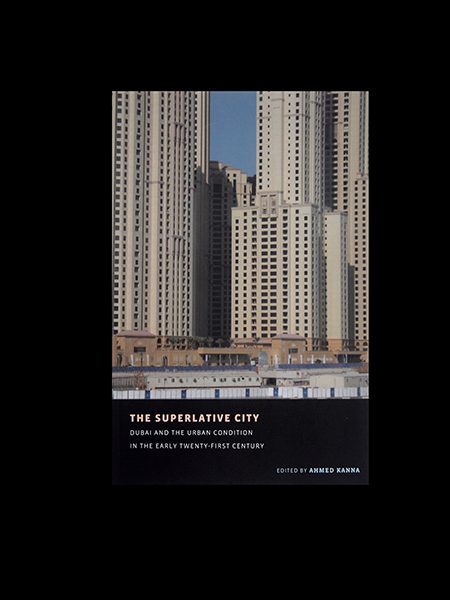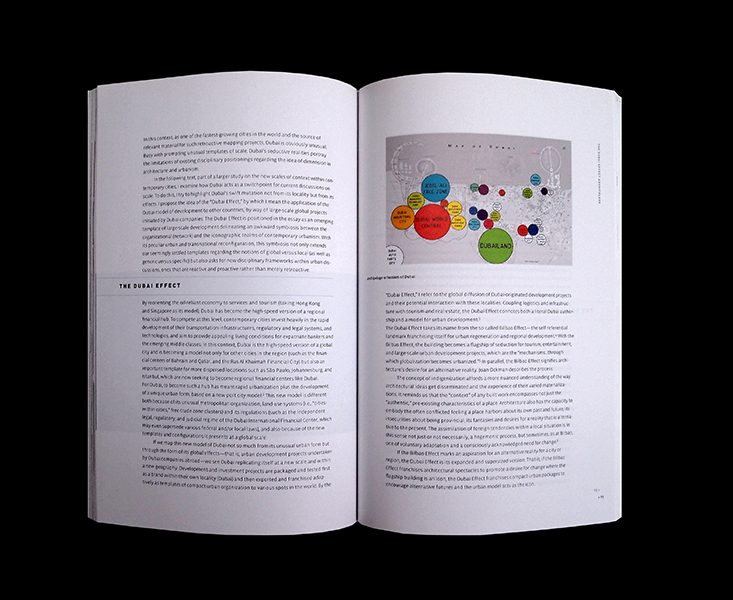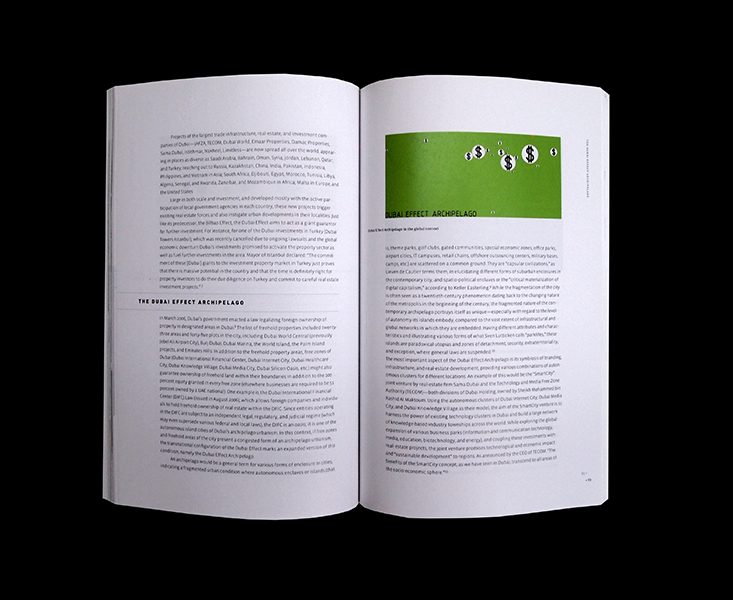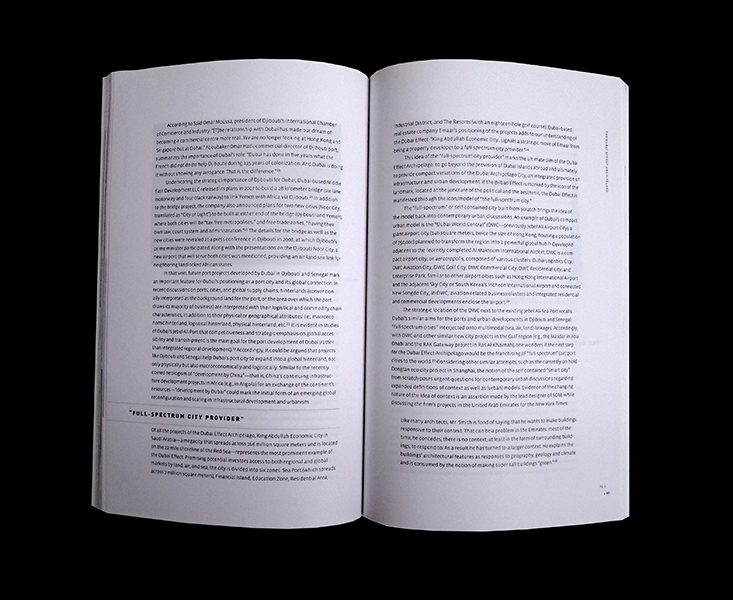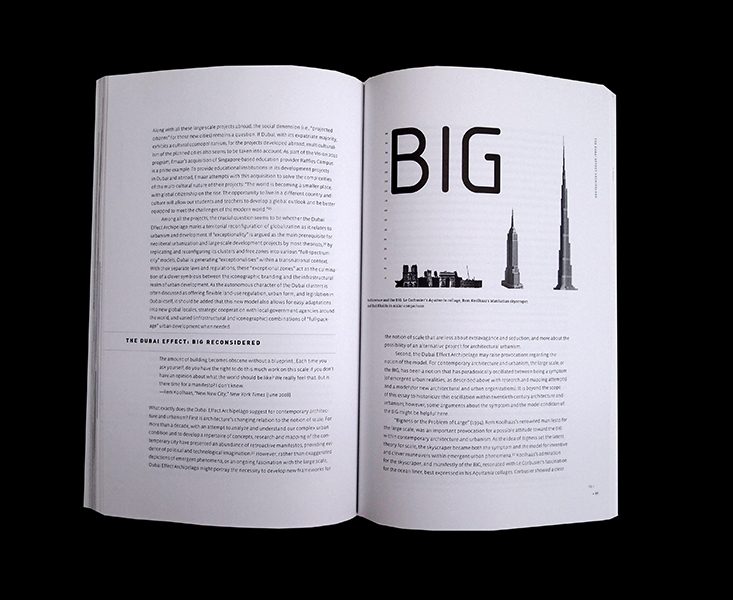As architecture and urbanism were busy mapping emergent phenomena, Dubai caught us at a bizarre moment. During the last decade, the contemporary city began to be seen as the physical and symbolic manifestation of globalization, rapid urbanization, infrastructures, and networks; research and mapping became more urgent for architecture and urbanism. The terminologies employed by disciplinary frameworks were deemed insufficient when it came to naming and interpretingnew urban mutations; accordingly, research on the contemporary city has mapped and documented the immediate and ungraspable evidence of urban conditions as they emerged, at times thickened with a wealth of “retroactive manifestos" that cannot cope with the abundance of evidence. In this context, as one of the fastest-growing cities in the world and the source of relevant material for such retroactive mapping projects, Dubai is obviously unusual. Busy with prompting unusual templates of scale, Dubai's seductive realities portray the limitations of existing disciplinary positionings regarding the idea of dimension in architecture and urbanism.
In the following text, part of a larger study on the new scales of context within contemporary cities, I examine how Dubai acts as a switchpoint for current discussions on scale. To do this, I try to highlight Dubai's swift mutation not from its locality but from its global effects. I propose the idea of the “Dubai Effect," by which I mean the application of the Dubai model of development to other countries, by way of large-scale global projects initiated by Dubai companies. The Dubai Effect is positioned in the essay as an emerging template of large-scale development delineating an awkward symbiosis between the organizational (network) and the iconographic realms of contemporary urbanism. With its peculiar urban and transnational reconfiguration, this symbiosis not only extends our seemingly settled templates regarding the notions of global versus local (as well as generic versus specific) but also asks for new disciplinary frameworks within urban discussions, ones that are reactive and proactive rather than merely retroactive.
